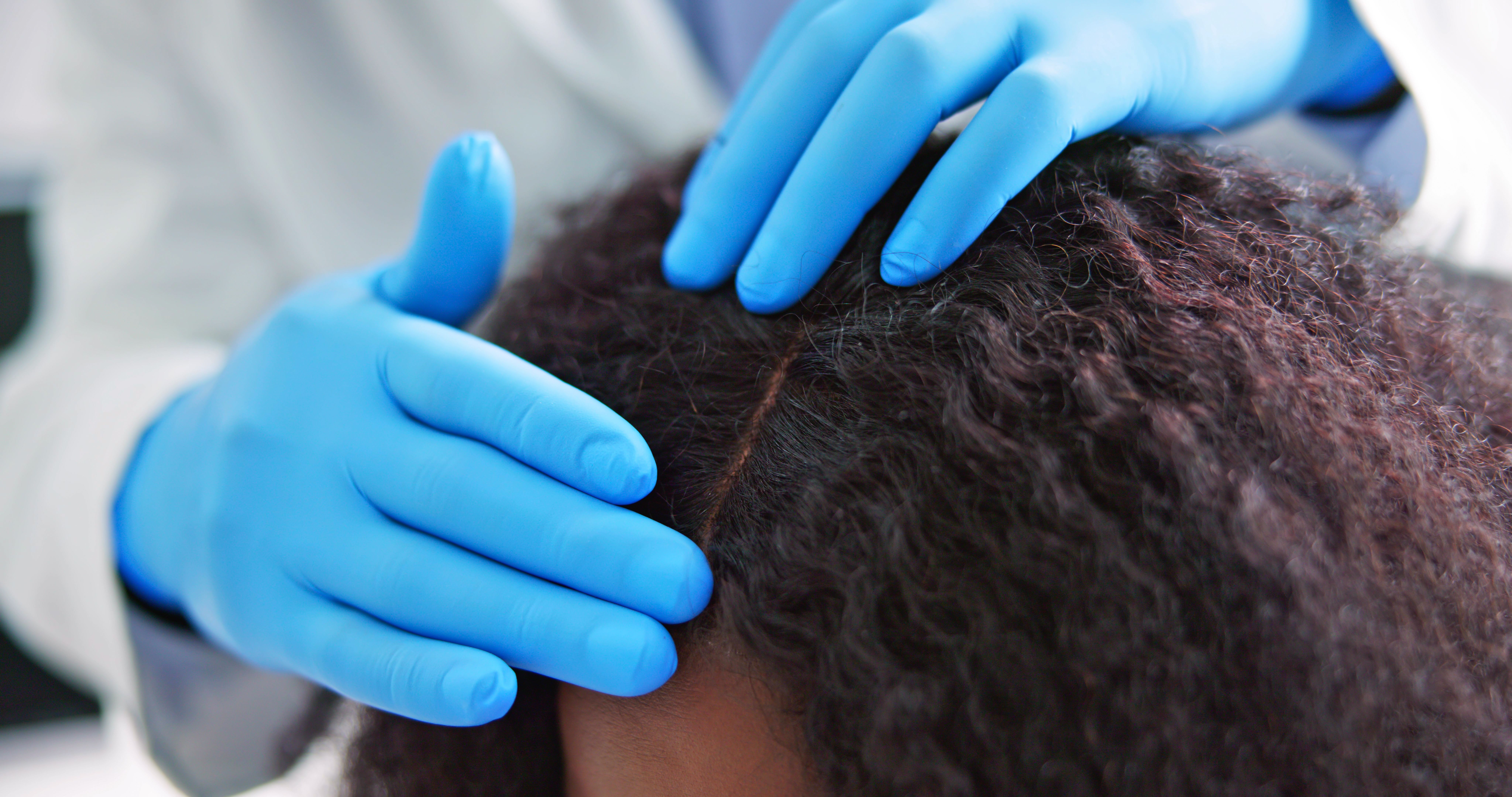- Acne
- Actinic Keratosis
- Aesthetics
- Alopecia
- Atopic Dermatitis
- Buy-and-Bill
- COVID-19
- Case-Based Roundtable
- Chronic Hand Eczema
- Chronic Spontaneous Urticaria
- Drug Watch
- Eczema
- General Dermatology
- Hidradenitis Suppurativa
- Melasma
- NP and PA
- Pediatric Dermatology
- Pigmentary Disorders
- Practice Management
- Precision Medicine and Biologics
- Prurigo Nodularis
- Psoriasis
- Psoriatic Arthritis
- Rare Disease
- Rosacea
- Skin Cancer
- Vitiligo
- Wound Care
News
Article
Reviewing Camouflage Techniques in Black Women With Alopecia and Hair Loss
Author(s):
A recent review evaluated the role of camouflage and concealment techniques and their role in improving the well-being of Black women with hair loss.
A review in the International Journal of Women’s Dermatology examined popular hair camouflaging techniques among Black women with alopecia, urging clinicians to expand their understanding of practices to ensure effective concealment while improving well-being and minimizing alopecia aggravation.
Dermatologists should undergo consistent counseling on hair camouflage techniques because Black patients have a higher risk of alopecia in comparison with other ethnic groups. Traction alopecia (TA) and central centrifugal cicatricial alopecia (CCCA) are among the most common types presented in Black women (33% and 15%, respectively). Frontal fibrosing alopecia (FFA) and androgenetic alopecia (AGA) are also common among Black women.
General considerations for healthy hair camouflage emphasize hair care since Black natural hair has an increased mechanical fragility, making it prone to breakage. The various hair camouflage techniques addressed may not be attainable for every patient, but the authors encouraged providers to adopt a shared-decision-making process to consider all options with patients.
Cranial prostheses are a common first choice for hair camouflage during the early stages of hair loss treatment, as they can be easily removed for topical medications or intralesional corticosteroid injections. Special considerations to prevent the exacerbation of symptoms included minimal tension braiding while altering the braid directions, with any discomfort prompting immediate loosening to avoid follicle damage. Clips, used to secure the prosthesis, should be removed with caution since repeated removal can cause breakage, mainly in preexisting TA and ATN. Sewn-in cranial prostheses are suggested as less damaging to the hairline since adhesive glue removal provokes hair loss along the frontal hairline from the hair follicle after excessive pulling.
Hair extensions are another form of hair camouflage suggested in early hair loss patients but patients with preexisting TA are discouraged from this method because they can add stress to the natural hair without patients noticing. Like cranial prostheses, loosely sewn or microring extensions cause less damage than adhesives, which cause trauma to hair follicles during the removal process. The recommended duration for extension wear is no more than 3 to 4 weeks, then alternating to a natural style for the same duration to reduce the chance of damage.
Topical hair fibers require existing hair, targeting patients with decreased hair density, categorized as mild to moderate hair loss. Creams or gels are used with topical hair fibers, but the topical medication often causes clumping with the fibers, revealing the area the patient is attempting to hide. The authors suggested topical hair fibers should be used in small amounts with an applicator to minimize clumping.
For some patients, regrowth is not an option once they reach end-stage hair loss. Various camouflage options for irreversible end-stage alopecia, include the most common, fixed cranial prosthesis. Wig installments mimicking natural hair usually last around 2 months after they are bonded to the scalp with strong adhesives. Caution is advised when using adhesive glues on sensitive skin because some cases reported contact dermatitis.
Scalp micropigmentation (SMP) is an option for hair loss camouflage in the form of cosmetic tattooing. Minimal injections of pigment onto the scalp aim to imitate hair follicles, reducing the perception of low-density growth. SMP procedures are invasive, making patient and practitioner communication necessary when including needle size, penetration depth, scalp resistance, appropriate pigments, and the formulation of a surgical plan.
Microblading, like SMP, is a form of cosmetic tattooing specifically for eyebrow restoration. The semipermanent technique uses a smaller needle than SMP in diameter, only lasting about 12 to 18 months. Drawbacks to SMP and microblading involve multiple treatments, the risk of infection from needle exposure, possible allergies to pigment dyes, and hair color change if hair regrows.
Hair transplantation involves harvested hair from a donor site, transplanted to the affected hair loss area. Follicular unit extraction is the most common method for donor harvesting but difficulties arise in patients with tightly coiled hair, such as curved follicle extraction and higher levels of hair follicle transection. Patients with primary scarring alopecia and diffuse hair loss are discouraged from transplantations because they do not have suitable densities.
The review accentuates upon hair camouflage techniques in Black women with alopecia and the careful considerations suggested when choosing a suitable technique, based on hair loss severity. Ultimately, clinicians need to acknowledge hair styling as a personal choice based on time, money, and desired outcome while aligning patients with their therapeutic goals.
Reference
Taye M, Kamili NA, Aguh C, Krueger LD. Considerations and recommendations on camouflage in alopecia in Black women. Int J Womens Dermatol. 2023;9(3):e111. doi:10.1097/JW9.0000000000000111
[This article was originally published by our sister publication, American Journal of Managed Care.]
Newsletter
Like what you’re reading? Subscribe to Dermatology Times for weekly updates on therapies, innovations, and real-world practice tips.















